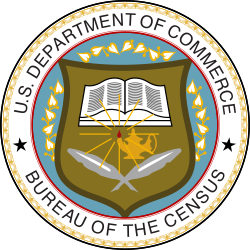| Twenty-fifth census of the United States | ||
|---|---|---|
| ||
 Seal of the US Census Bureau | ||
| General information | ||
| Country | United States | |
The 2030 United States census, known as "Census 2030", will be the 25th United States census. National Census Day, the reference day which is used for the census, will be on April 1, 2030. [1]